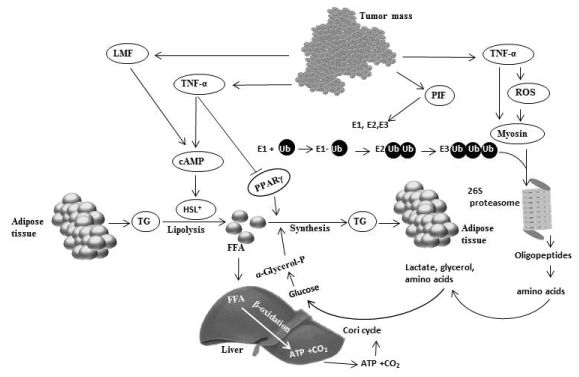
 |
| Figure 2: Molecular mechanism responsible for the loss of adipose tissue and skeletal muscle during cancer associated cachexia. The production of cancer associated factors and cytokines e.g. lipidmobilizing factor (LMF), tumor necrosis factor (TNF)-α and proteolysis-inducing factor (PIF). The increased levels of TNF-α and LMF in tumor patients results in the hydrolysis of triglycerides in adipose tissues through the breakdown of cyclic AMP (cAMP) that, in turn, reduces the activation of hormone-sensitive lipase (HSL). Also, high level of TNF-α can suppress the peroxisome proliferator-activated receptor γ (PPARγ) and subsequently inhibits the biosynthesis of TG. Once TNF-α-induced free fatty acids (FFAs) enter the liver, the β-oxidation of FAA produces energy in the form of adenine triphosphate (ATP) in addition to the production CO2. ATP drives the cori cycle to convert lactate, glycerol, amino acids to glucose. The induction of proteolysis inducing factor (PIF) increases the production of proteasome subunits and thereby enhances protein degradation in skeletal muscle. |